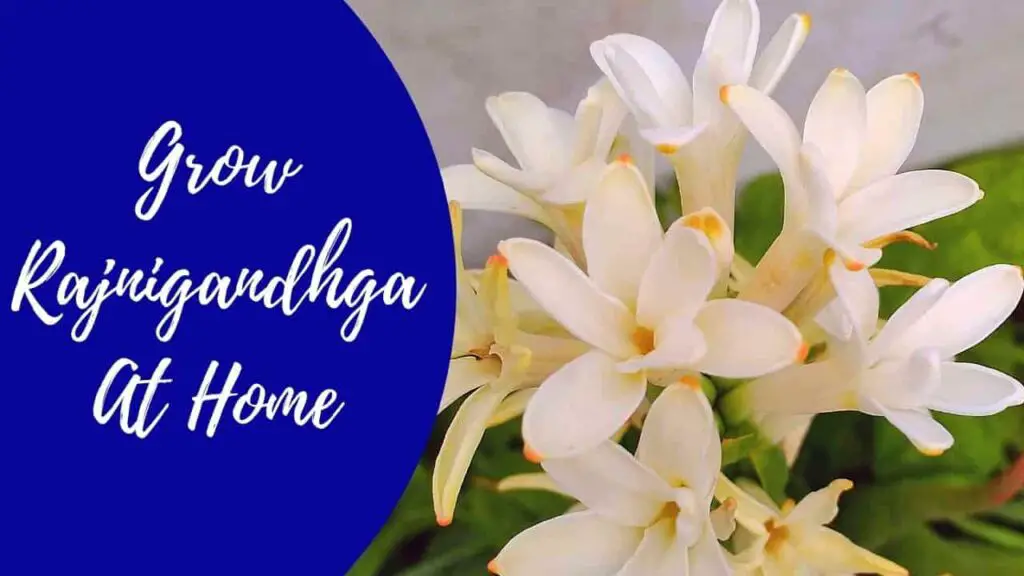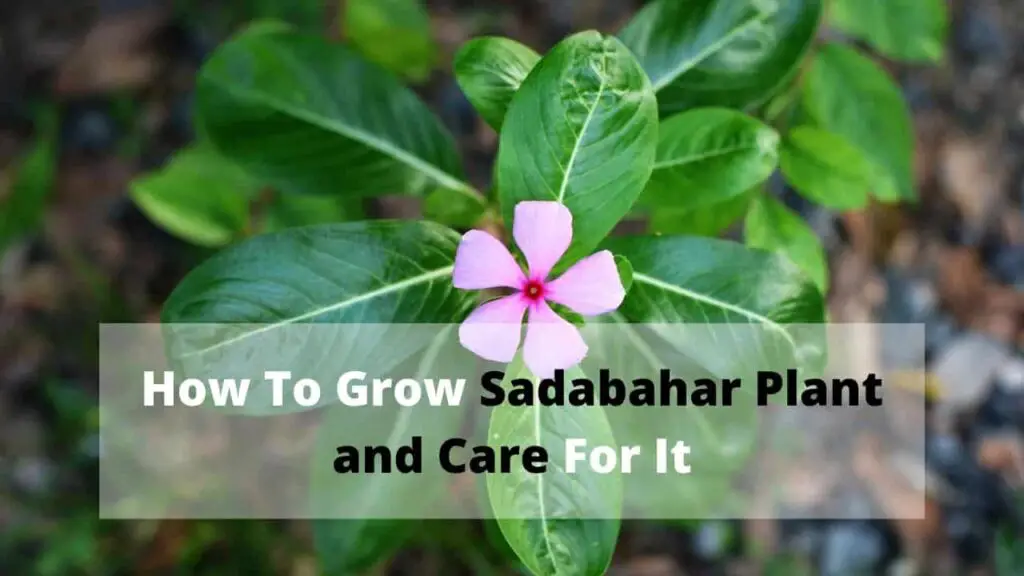Chandni Plant is known by many names such as Tagar Flower, Crepe Jasmine, East India Rosebay, etc.
This attractive plant got its name Chandni (Moonlight) because it blooms under the moonlight.
“And when its white flowers open up in the dark to the contrasting green leaves it is a sight that houses forever in your mind.”
How to Care for Chandni plant?
For proper Chandni plant care, you need to provide it good amount of sunlight, watering, and the right potting soil.
Any nature lover will love to have this beautiful 365-day flowering plant in their home.
Today in this post I will tell you everything on:
Chandni Flower Plant – How to Grow & Care for it?
A Quick Overview Of Growing Tagar/Chandni Flower Plant.
| Soil Ph | 4.8 – 6 ( slightly acidic) |
| Sunlight Requirement | Direct – Partial |
| Flowering season | Throughout ( except winters) |
| Best Time To Grow | Mar – May & Aug – Sep |

Table of Content
- Chandni Plant Care
- Types of Chandni Plant
- Best Season to grow Chandni Flower
- Preparing Potting soil
- Choosing an ideal size container
- Steps to grow Chandni tree from Cutting
Chandni Plant Care – How to Take Care of Chandni Plant
For Chandni plant care, you will need to provide it with ample amount of sunlight, watering, and fertilizer, and grow it in potting soil which is right for it. The Chandni plant requires special care during winter as it goes into dormancy.
Sunlight
This is the most important Chandni plant care tip.
Never keep your Chandni flower under shade, as this plant will suffer to grow in such conditions.
This plant needs minimum of 4 hours of direct sunlight every day.
Water Chandni Plant The Right Way
Although it loves to be flooded with water, but it cannot handle overwatering.
So, make sure that before watering it, you always check if the soil has got dry or not.
If it feels moist and sticky. Do not water it, otherwise, the leaves will start to turn yellowish in color and ultimately develop root rot.
Fertilizing
The Chandni plant is a heavy feeder and requires a good amount of fertilizer from time to time.
So, provide it with a good amount of food during its active growing season of spring and summer season.
You can use a good vermicompost (like this one) to feed it.
Provide it with compost every 25-30 days.
Note – Don’t add fertilizer to it in the winter season, as it goes dormant and will not be able to take it.
Making Soil Acidic – Chandni Plant Care
Is your plant struggling to grow?
The reason can be the ph level of the soil, Chandni plant like slightly acidic soil.
To make the soil acidic, you can simply make a solution of:
1 Tablespoon vinegar in a 1-liter bottle and use it next time you water the plant.
Tackling Pest
It can be attacked by a pest which ends up eating the leaves and making holes in them.
For this, you should regularly keep looking for such leaves and remove them.
You can make organic pesticide from Neem oil and spray it over the leaves.
2 Important Things to Note while using Neem Pesticide:
- Spray Neem oil during evening and night time only, because if exposed to sunlight for a short duration it can burn the leaves.
- Keep a gap of 20-25 days between the sprays. Do not spray pesticides in short intervals.
Winter Care Tips For Chandni Flower
The Chandni flower plant goes into dormancy during winter, which means it will stop growing in this season.
During this period it is common for a Chandni tree to shed leaves, so don’t worry about that.
On top of that, to take proper care of the Chandni tree in winter:
Decrease its watering:
As the plant is in dormant conditions & doesn’t absorb water the same way it used to. So, if you water it the same way, it will get overwatered and its leaves will start to turn yellowish.
If your chandni plant leaves are turning yellow, check if the soil is very wet and soggy, if yes then allow it to dry out.
Keep It Indoors/Shade:
Chandni plant cannot handle the tiniest amount of frost and its health will start to deteriorate if exposed to frost. So, move it indoors during the night or keep it under shade so that it is protected from frost and cold winds.
Container Size
The Chandni flower plant grows quite big and will need to be repotted from time to time when it outgrows its present container.
As it cannot handle root-bound conditions and cease to grow.
So, whenever you see that your plant has grown big enough for the container, move it to a one-size bigger pot.
Types of Chandni Plant
- Mini Chandni Plant
- Double Chandni Plant
- Single Chandni Plant
Ideal Season/Temperature for Growing Chandni Flower
The Chandni flower is native to India and thus loves warm weather.
So temperature ranging anywhere between 20-35 degree Celsius will be a good fit for it.
The best Season to Grow Chandni Plant will be:
Between March–May and then Aug – Early Oct.
Avoid any season that has a chance of frost.
Note: You can grow it during monsoons as well, but if you are growing it directly on the ground then make sure the water doesn’t stay near the roots for a long time as it will cause root rot.
If growing in pots then keep the pot under a green net or any other shade to avoid getting overwatered by rain.
Another useful article – Terrace Garden Ideas India
Preparing Potting Soil For Tagar Plant
Chandni plant doesn’t ask for much when it comes to soil requirements and can be grown in almost any type of soil.
Unless it has too much of clay content which is sticky in nature and isn’t favorable for the Tagar plants.
If that’s not the case with you:
Then A Potting Mix of:
- Normal Garden Soil – 50%
- Coco peat – 20% (good quality like this one)
- Compost – 25% (Vermicompost)
- Neem Khali – 5% (A good like this on amazon)
Will work well for it.
If you have no idea how to do it yourself, you can read this amazing guide on making potting soil at home which I wrote previously.
Or, if you don’t want to invest time in making it by yourself, you can always order pre-made good quality potting soil from amazon.
Some of the best potting soils I found are these:
Bloombuddy for flowering plants
Trustbasket all purpose
Choosing the right size container (Chandni Flower)
When you grow a Chandni flower in a pot, it requires different-sized containers at different stages of its growth period.
For its cuttings, a 6-inch pot is good enough.
And once it grows big and starts to produce leaves, you can transplant each sapling into an 8 inch pot.

Whenever you use a container, make sure to make 4-5 drainage holes at the bottom of it for proper drainage and passage of air, this is very important.
Otherwise, your plant will die of suffocation and overwatering.
How to Grow Chandni Plant From Cutting
To grow Chandni plant from cutting just follow these simple steps:
For this, you will need to get 3-4 cuttings from a healthy plant that are tender in nature.
Cut them just near the node and you will be good to go.
Make sure the cutting is tender and greener in color…!!!
Because these tender cuttings will have higher moisture content in them and will grow easily.
Take a small pot (6 inches) filled with the right type of potting soil, as I told you above, insert this cutting into it, and then water it thoroughly.
Although Tagar plant loves the full sun these small cuttings are still to develop roots, so they should be placed in bright but indirect sunlight.
Otherwise, the tender cuttings will lose their moisture content and may not grow.
After some period, it will start to grow leaves and develop roots by then and should be placed in a big container and moved to a location that receives direct sunlight.
Tagar Plant/Crepe Jasmine handles repotting very well.
Chandni Flower Sunlight Requirement
Once your cutting has grown big enough and developed 4-5 leaves, it should be placed in a location that gets at least 5-6 hours of direct sunlight.
Chandni plant does the best in direct sunlight and if you keep your plant under shade or provide it only indirect sunlight, it will not produce flowers.
But protect it from the harsh afternoon of summer, which can burn the leaves of the plant.
Water Requirements of Chandni Flower?
As the Chandni plant loves to soak under the sun for a long period of time, it requires a good amount of watering as well.
So, whenever you water it makes sure that the water comes out of the drainage holes.
And then provide it some gap between watering it next time by allowing the top 1-2 inches of the soil to dry out.
If you keep the soil consistently moist and don’t allow it to dry, you run the risk of overwatering it which can lead to root rot.
So, before watering it makes sure the soil has got dry by touching it with your finger.
Wrapping Up
I hope this guide will help you grow your tagar plant at home.
If you have any more questions then do make sure to ask them in the comment section.




